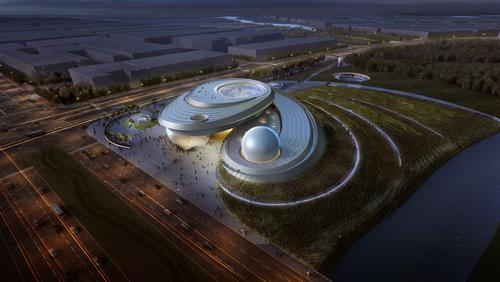05 Mar 2015
Ennead chosen for Shanghai Planetarium development
BY Tom Anstey

Ennead Architects has revealed futuristic plans for the new Shanghai Planetarium after the New York-based design firm won an international contest for its commission.
The 38,000sq m (409,000sq ft) development – a part of the Shanghai Science and Technology Museum – has been designed to celebrate the continuum of time and space. According to Ennead, the plans mirror both the rich history of Chinese astronomy and the future ambitions of China’s space exploration programme. In linking the new Museum to both scientific purpose and to the celestial references of buildings throughout history, the exhibits and architecture will “communicate what it means to be human in a vast and largely unknown universe”, according to Ennead partner and design principal, Thomas Wong.
The firm’s design strategy has been based on orbital motion. An oculus, inverted dome and sphere comprise the central body of the architecture, with the building form, programme and circulation incorporating orbital movement, supporting the flow of visitors through the galleries and the three central bodies.
The oculus has been designed so visitors can track a circle of sunlight on the ground across the entry plaza and its reflecting pool. The inverted dome will offer guests a spatial experience focusing on the uninterrupted sky dome. The sphere on the outside of the building contains the planetarium theatre and acts an important icon and reference point to visitors within the museum; something Ennead described as “integral to the planetarium’s identity”.
Also included in the development will be an expansive ‘green zone’, as well as gardens incorporating an exterior exhibitory with a 24m (79ft) -high solar telescope, youth observation camp and observatory. Speaking to AM2, a representative for the planetarium said that at this stage, development costs are being kept confidential and the expected completion date will be some time in 2018.
Close Window